While looking through the WE virtual learning center, I found a learning resource that provides educators with a model of how to go about the complexities and trauma indigenous youth face, and how to make educators more aware of these issues and how to work through them.
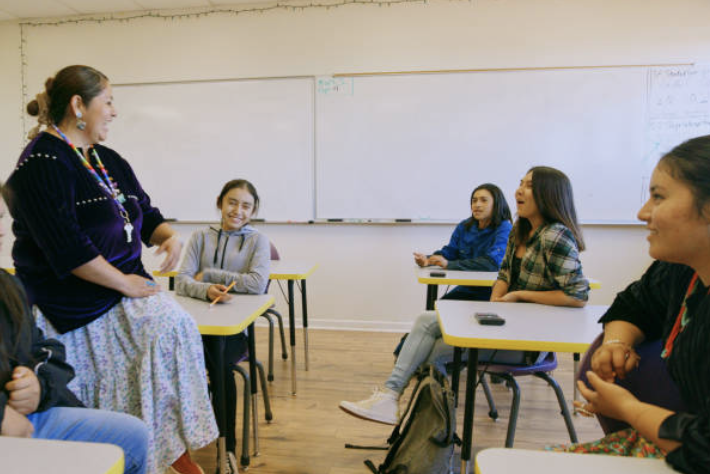
This learning module from WE is called “WE Teachers Supporting Indigenous Youth Module”. This module has three primary sections, the opening, educator activities, and classroom activities.
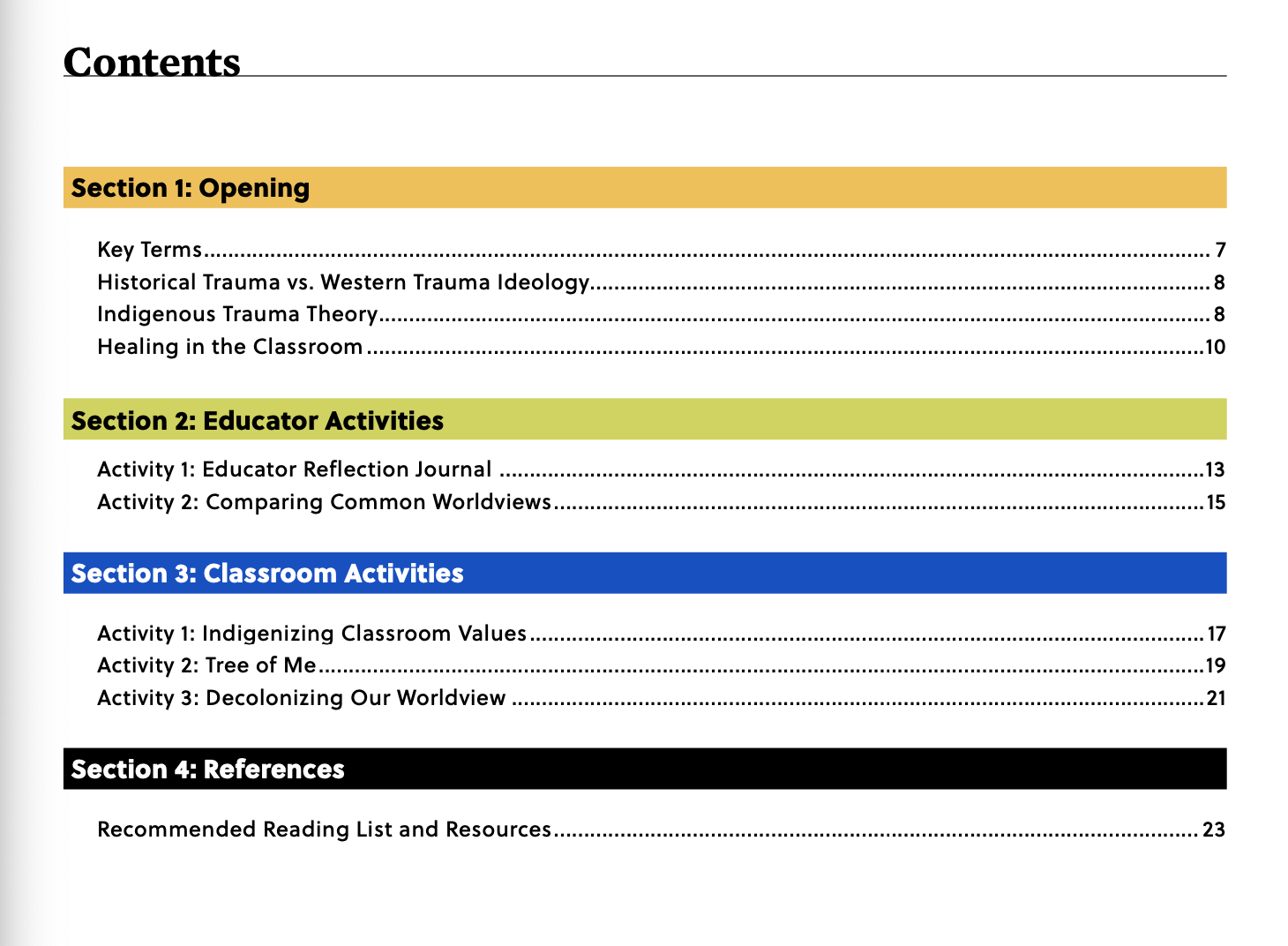
These activities are ones i am excited about bringing into future classrooms because I believe that education on how indigenous youth has historically been treated in the education system by the government is not discussed openly enough to make sure people are not ignorant of the long lasting effects it has had on these communities.
The opening in this module goes over many vocabulary terms pertaining to colonization, decolonization, its effects, and other terms used by indigenous communities to help educators better understand their students background and them as a person. The opening also addresses the historical trauma that indigenous communities have faced in America and how it can pertain to children and education. One of these traumas being boarding schools indigenous children were forced to go to in order to “kill the Indian and save the child” . Off the bat the relationship of public education and indigenous communities is a traumatic one that has lasting effects and has worked to separate indigenous children from their communities, heritage, language, and culture.
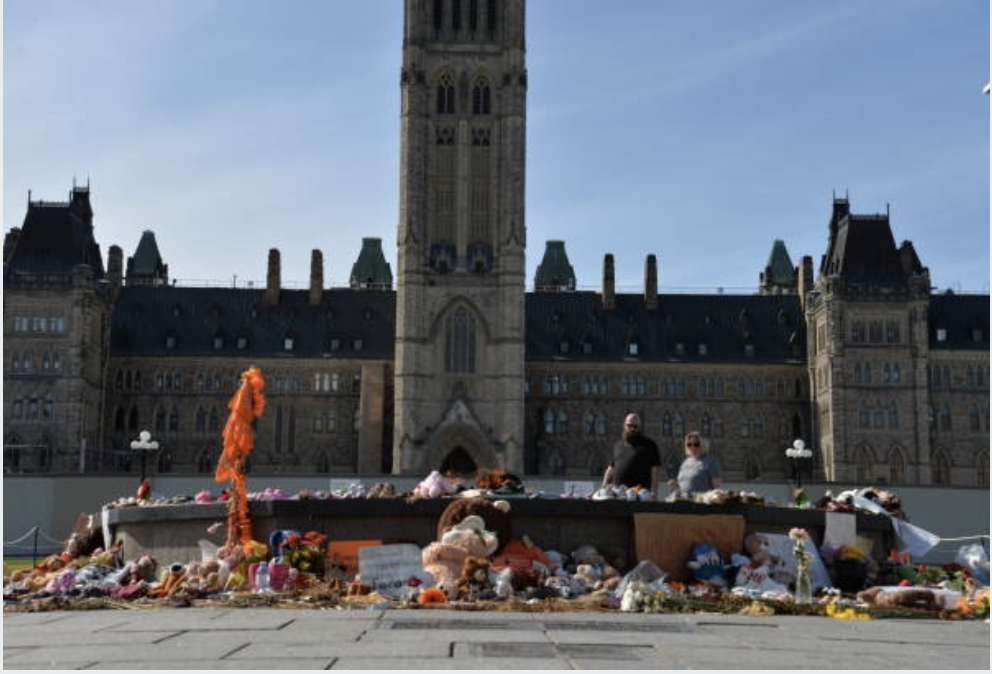
It is super empowering as a future educator to know that others are working to create classrooms that talk about these historic events and their effects instead of ignoring them.
The educator activities in this module give the educator a space to reflect o mthe information in the opening before bringing this material into the classroom. This is a great way to make sure that educators also have a chance to internalize and reflect on this information as the students would.
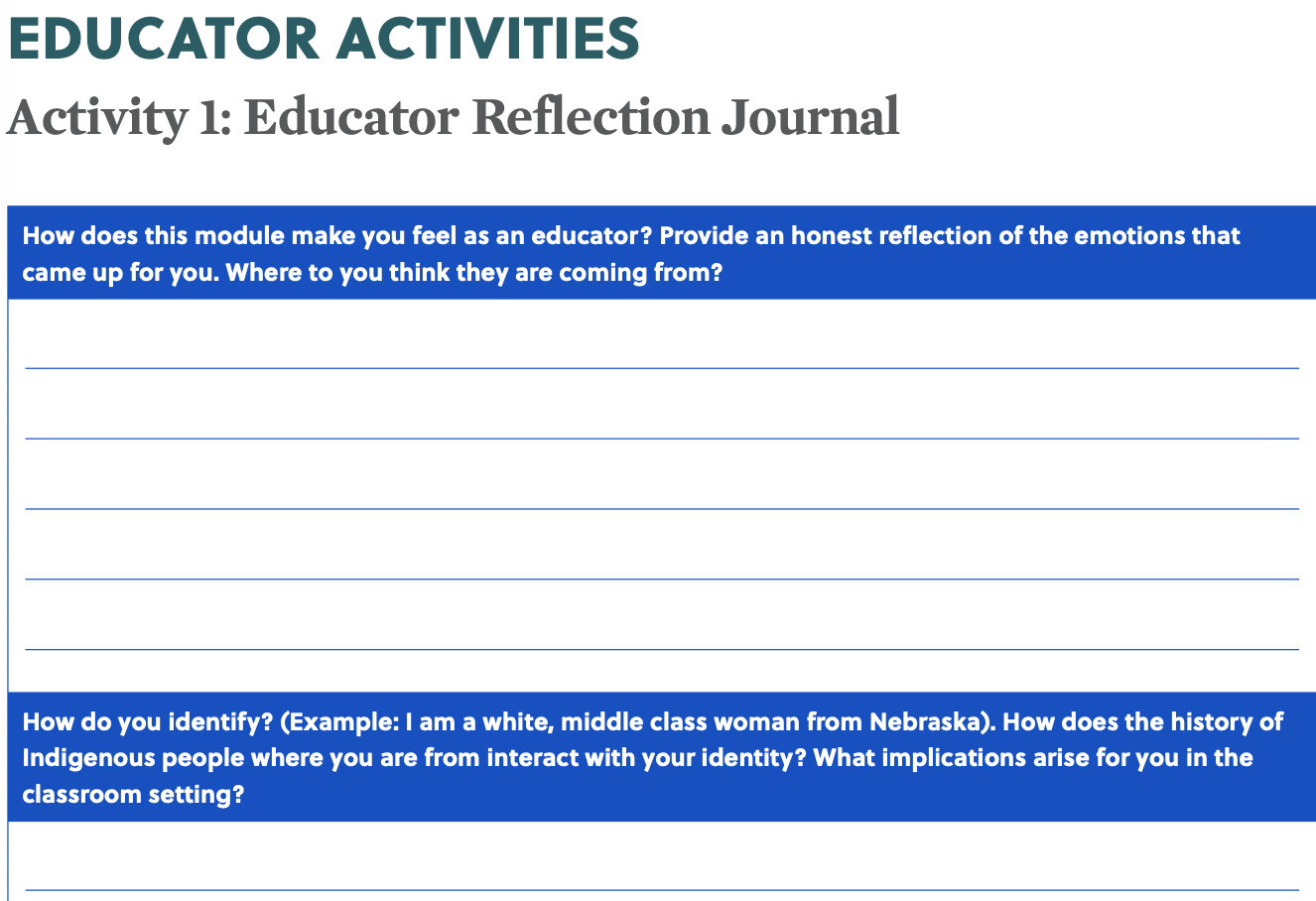
The classroom activities in this module offer questions and reflective practices that the students can talk openly about as it pertains to their own identities and communities and what these things mean to them. Also offering activities like a values medicine wheel that introduces an indigenous symbol of their values and lets other apply this to their own life. To me, this gives the students of different backgrounds to learn about each other and how even though we may come from different places and have different values that we are not as dissimilar as it may seem to some.
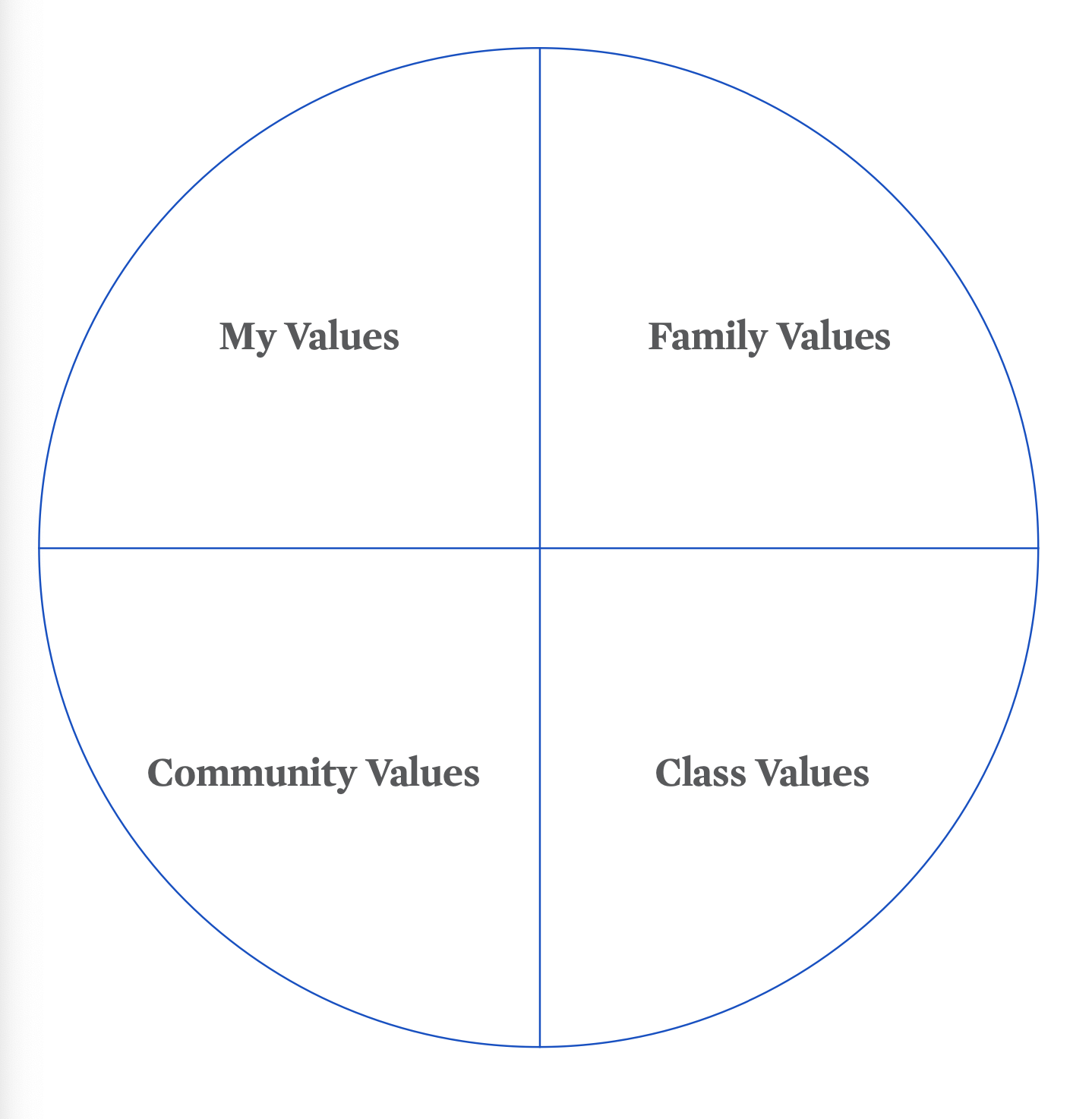
Overall, I am super excited to be able to one day introduce activities like these into my classroom that raises social-cultural awareness, empathy, and connection between all students no matter their heritage.